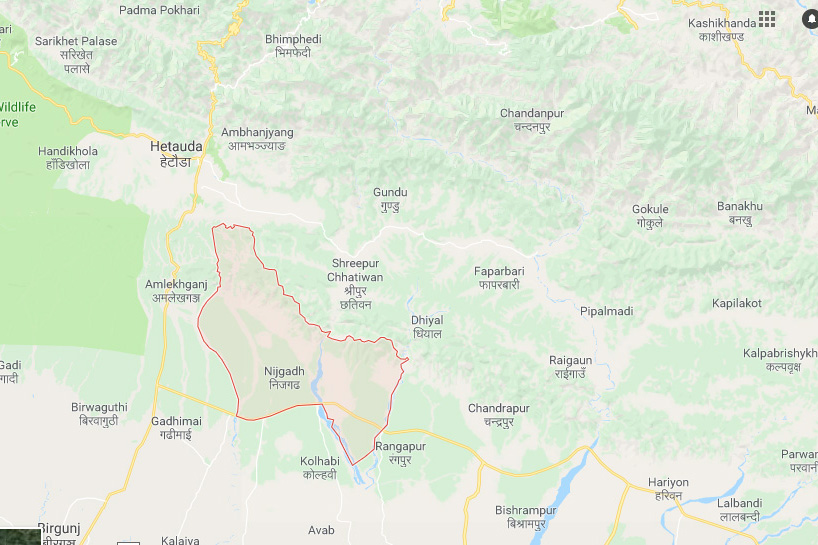Fate of many species at proposed airport site uncertain
Kathmandu, September 24
Scores of animals and plant species, including a number of endangered species, have for their habitat, the forest area of Nijgad in Bara district, where 2.45 million trees are likely to be axed in an area covering 7,969.37 hectare to build an international airport in a total area of 8,045.79 hectares.
Government authorities, however, are not sure about relocation or rehabilitation of thousands of animals whose habitat will be taken over.
According to the Environment Impact Assessment Report, a total of 23 mammal species, including wild Asian elephant, gaur bison, royal bengal tiger, pangolin, python, giant hornbill, and saras crane were spotted in the area of the proposed airport. These animals arespotted in endangered and must to be conserved as per the National Parks and Wildlife Conservation Act 1973.
The forest area also houses 31 species of birds, 10 species of reptiles and 31 species of butterfly. Similarly, there are scores of invertebrates and insects species in the area. The area is also home to 22 endangered plant species.
The EIA was prepared by the Civil Aviation Authority of Nepal and was approved by the government in May end.
A previously prepared EIA report by the International Union for Conservation of Nature in 1994 for the same project shows that around 500 species of ‘avian fauna’ were reported in the proposed airport area.
Government authorities are not sure how to relocate or rehabilitate the species in the jungle area. Joint-secretary Sindhu Prasad Dhungana at Ministry of Forest and Environment said that it would be difficult to speak about relocation of plant and animal species at the project site unless the Detailed Project Report was finalised.
“We have not prepared the Environment Management Plan which will go side by side with the DPR. Once we finalise the EMP we will have details about how and where the animals will be relocated or make sure how the natural movements of wild animals will not be affected.” He also said, until now there were no plans to protect wildlife in the project site.
The EIA report approved by the government mentions wild animals found in the project site will have to be ‘captured without hurting’ them. The EIA however, also does not mentioned procedures for relocating them.
The EIA has proposed to plant 61.27 million saplings, which is 25 new saplings planted against one tree axed down. Environmentalists have said that would not compensate the loss as even if they planted the tress as promised, loss in the area would not be recovered and the ecology will deteriorate in future.
Environmental rights activist Sanjay Adhikari said, “The government is not sure where to plant tress. The government should spell out how the flora found in the project site and its surroundings will be relocated.”
Ram Kumar Sharma, who coordinated the Forest Research and Conservation Programme 2010 of Natural Resource and Means Committee in the Constituent Assembly, said that the EIA has failed to mention about the natural corridor for wild animals which will be affected by the project. It has also failed to provide the monetary evaluation of ecosystem benefits, wetland benefits and benefits of a sound environment.
“Construction of the airport in such a large space will support the desertification of the Chure region as the airport will limit human access to natural resources and urbanisation will be rampant in the entire district.”
He also suggested that relocating the airport to around four kilometres southeast could drastically decrease the chances of having to clear the forest on such a large scale.






